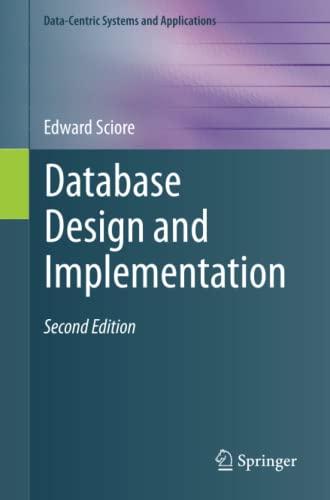Question
Chapter 2: Literature Review Given below is an annotated bibliography (a list of the resources referred to, with a brief summary of the findings in
Chapter 2: Literature Review
Given below is an annotated bibliography (a list of the resources referred to, with a brief summary of the findings in each resource). Read the annotations carefully and discuss the emerging themes. (LESS THAN 150 WORDS)
1. Bhargava, A., Kirova-Petrova, A., & McNair, S. (1999). Computers, gender bias, and young children. Information Technology in Childhood Education, 1, 263274. Young children are intrinsically motivated to use computers but a discrepancy exists between elementary school boys and girls ability to access technology. Differences in usage can be blamed on gender based classroom practices, lack of female role models, computer gender gap in homes and the scarcity of bias-free software The argument is made that a proactive approach to addressing these issues will prepare all students to use technology.
2. Butler, D. (2000). Gender, girls and computer technology: Whats the status now? The Clearing House, 73(4), 225229. There is a gender gap in technology but the argument is made that the current gender gap is not new; it is something educators have known about for a long time. This gap has been related to use of the computers at home, course types taken, gender response to video games, a cultural bias that technology is a male domain, the relationship of computer usage to math ability, etc. Boys have a more positive attitude than girls and are given more opportunities for technological mastery. Although young students start school with similar interests in technology, this changes from about the fifth through eighth grades.
3. Nicholson, J., Gelpi, A., Young, E., & Sulzby, E. (1998). Influences of gender and open-ended software on first graders collaborative composing activities on computers. Journal of Computing in Childhood Education, 9(1), 342. Using ethnographic methods, the researchers studied mixed-gender and same-gender groups of 1st graders using computers. Young boys and girls begin school with a similar interest in computers but that interest changes over time. Females tended to use grouping language, while males were more singular. Females had their work interrupted by males but the reverse wasnt true. Males were quick to critique, laugh at, or criticize the work of female students.
Source: Terrell, S. R. (2016). Writing a Proposal for Your Dissertation: Guidelines and Examples. New York: The Guilford Press.
Step by Step Solution
There are 3 Steps involved in it
Step: 1

Get Instant Access to Expert-Tailored Solutions
See step-by-step solutions with expert insights and AI powered tools for academic success
Step: 2

Step: 3

Ace Your Homework with AI
Get the answers you need in no time with our AI-driven, step-by-step assistance
Get Started


